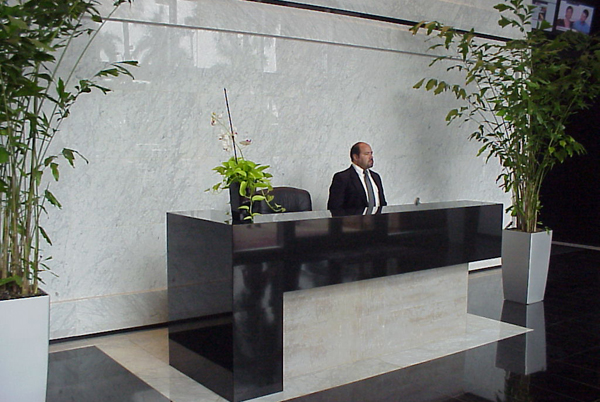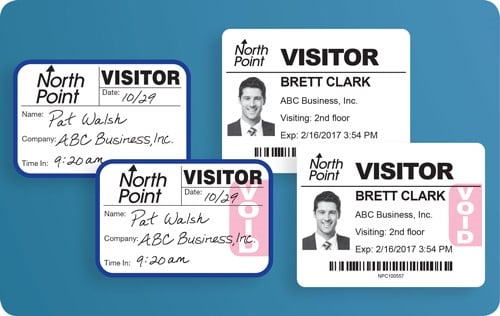Blog
6 lobby design issues that compromise security
by Paul Kazlauskas

The lobby of any company, school, or healthcare facility is the 1st place the public can enter a building. It is a significantly important area to have a properly designed security protocol. Visitors entering your lobby will need their access restricted (at least initially) so they are funneled to your visitor management system for registration. A poorly designed lobby can increase operational costs by requiring extra staff be hired to overcome any security weaknesses. Unfortunately, security isn’t always top of mind when designing a lobby. Many lobbies are designed for convenience. Other times, they are designed to look really attractive. However, ease of use and visual appeal should always take a back seat to security because that is what is most important. Here are some common security weaknesses that exist in lobbies.
1) No physical barrier between the public area and the private area of an office. The receptionist is the only barrier between visitors and the restricted areas of the building. In this instance, too much is being asked of the receptionist to control access. The receptionist’s primary responsibilities include managing the lobby, greeting guests, and logging visitors into a visitor management system. There should be a physical barrier, such as wall, to restrict visitor access.
2) The receptionist does not face the front door. If the receptionist’s desk isn’t facing the front door, they are unable to see who is entering the building. When a visitor enters a facility, they should be drawn to the receptionist’s desk to register themselves. The receptionist shouldn’t have to keep looking over their shoulder to see if a visitor has entered the lobby.
3) Entrance to an elevator or staircase is ahead of receptionist’s desk. If visitors have the physical option of skipping the receptionist’s desk to register themselves, they may just do that (whether it’s intentional or unintentional). The lobby should be designed so visitors are funneled to a central area to get registered for their visit and not have an option to skip that security protocol.
4) A door to a private office is ahead of the receptionist’s desk. A visitor shouldn’t be able to sneak through that office to gain access to an unauthorized area. The visitor’s name, time arrived, and reason for visit should be documented before they can go beyond the lobby.
5) Restrooms are located in a private area. It makes sense to place restrooms in a location where they can be used prior to the area where guests & visitors have to be registered. If the restrooms were located in a private area, a visitor would have to be registered prior to using the restroom. A visitor management system would be used more often than it needs to be when a delivery person needs to use the restroom, wasting visitor badges and further depreciating any equipment or supplies faster than necessary.
6) Lobby used as the main entrance for employees. Employees should have a separate entrance point than the front lobby. Reducing foot traffic through the lobby makes it easier for the receptionist to observe activity and reduces the chances of a visitor “tailgating” behind an employee. In addition, if employees entered the facility through the lobby, the receptionist would be constantly disrupted during the start and end of the day to see if every incoming and outgoing employee is a visitor that needs to be registered or signed out.
The proper design of a lobby, with security in mind, is more important than people realize. Design the lobby so that visitors have to go through your security protocol and don’t even have the option to bypass them. If you’re trying to control a lobby, it should be a closed environment until registration, for security reasons.
Can you think of any other examples of poor lobby design? Have a story to share? Please comment in the section below.
Our visitor badges “VOID” overnight to prevent reuse. 
See them for yourself — request free samples!
Follow us on Social Media for more security content.![]()
![]()
![]()
Posted on 10/27/2015



 Paul Kazlauskas
Paul Kazlauskas
 Andrew Jones
Andrew Jones